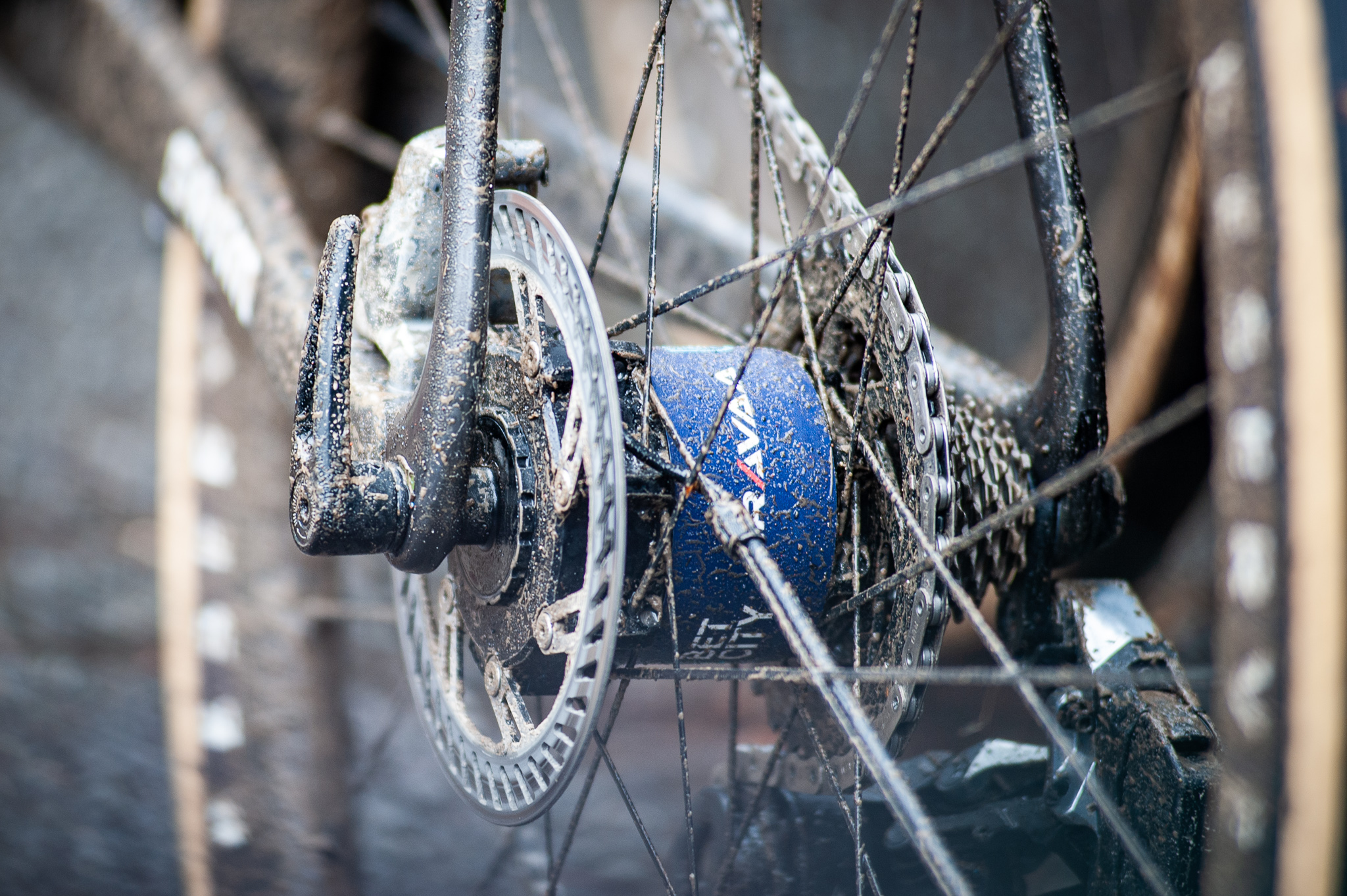Women's teams steer clear of adjustable tyre pressure systems at Paris-Roubaix
Jumbo-Visma and Team DSM women's teams didn’t ride with the technology on account of low supply and different race profile

Ahead of the 2023 edition of Paris-Roubaix and Paris-Roubaix Femmes avec Zwift, one question had cropped up time and again in rider press conferences: what do riders make of the innovative tyre pressure adjustment systems being tested by several teams?
While Jumbo-Visma and Team DSM have confirmed that their male riders will be employing the Gravaa KAPS and Scope Atmos systems, respectively, the women’s teams didn’t put the systems to the test this year.
"At the moment we have two race-ready systems and two spare systems available for the race on Sunday," Team DSM explained to Cyclingnews. "We would love to use this at the women’s race in 2024, but for the moment it will exclusively be used at the Men’s race."
Speaking to Cyclingnews at the Paris-Roubaix Femmes start, Team DSM’s communications officer Lukas Kruse explained that, alongside the shortage of systems, the fewer cobbled sectors on the women's route also influenced the decision.
Riders would also need time to train with the equipment, which has a dual control on one side of the handlebars to inflate and deflate tyres, and offers only five reinflation pumps for the entirety of the race.
Kruse explained that Team DSM’s female riders are highly intrigued, and keen to use the tech as soon as supply is viable, and hopefully verified by testing in the men’s race.
Jumbo-Visma similarly cited supply challenges when we asked whether the female riders would test the Gravaa system - the team also only have four units for the race. Unlike Team DSM, though, the Jumbo-Visma women were less eager to put the equipment to the test, with press officer Femke Meurs explaining that Marianne Vos had not even queried the possible use of the system.
Get The Leadout Newsletter
The latest race content, interviews, features, reviews and expert buying guides, direct to your inbox!
The men’s race on Sunday, therefore, will be a watershed moment in understanding the potential of the system - whereas in previous years the women’s race has seen certain teams experiment with new tech innovations such as tubeless tyres or 1x groupsets.
Trek-Segafredo, particularly, have used the women’s race as a test bed for new equipment. Last year the team showcased the new Trek Domane in the women’s race ahead of the men’s race, and in the previous year experimented with tubeless tyre systems for the women’s race, where Trek-Segafredo’s Lizzie Deignan took victory.
Elisa Longo-Borghini was asked if Trek-Segafredo had considered innovating with similar tyre inflations systems in this year’s race at a press conference ahead of the race. "I think it's really good and we always have to go farther with new technology, new equipment. It's a great thing,” she said. “I have not tried it with Trek, we haven't yet used it."
Longo-Borghini also drew attention to the influence of the different terrain in the men's and women's routes on equipment choice. This year the women have sided predominantly for Trek Domane bikes while the men will predominantly ride on aerodynamic Madone bikes.
"The men have 100km of asphalt before they hit the first cobbles sector, and because of this, there is always a breakaway going in the first hour and a half,” she said. “In the last years, they saw that most of the time, one of the riders on the podium was one of the ones in the breakaway earlier on.
“In terms of percentage, we have more cobbles than the men's race [compared to the length of the race], so we need a softer bike to go over the cobbles, that's the main point, to just reduce the vibration and impact on the cobbles."
With the constantly changing nature of cycling technology at Paris-Roubaix over the last several decades, there’s no doubt that a successful Sunday for Jumbo-Visma or Team DSM could see a sea change in equipment used across the WorldTour peloton. Yet, at the same time, experimental rear suspension systems have easily come and gone from the race, so this could equally be the last we hear of the technology.

Peter Stuart has been the editor of Cyclingnews since March 2022, overseeing editorial output across all of Cyclingnews' digital touchpoints.
Before joining Cyclingnews, Peter was the digital editor of Rouleur magazine. Starting life as a freelance feature writer, with bylines in The Times and The Telegraph, he first entered cycling journalism in 2012, joining Cyclist magazine as staff writer. Peter has a background as an international rower, representing Great Britain at Under-23 level and at the Junior Rowing World Championships.
- Kirsten FrattiniDeputy Editor